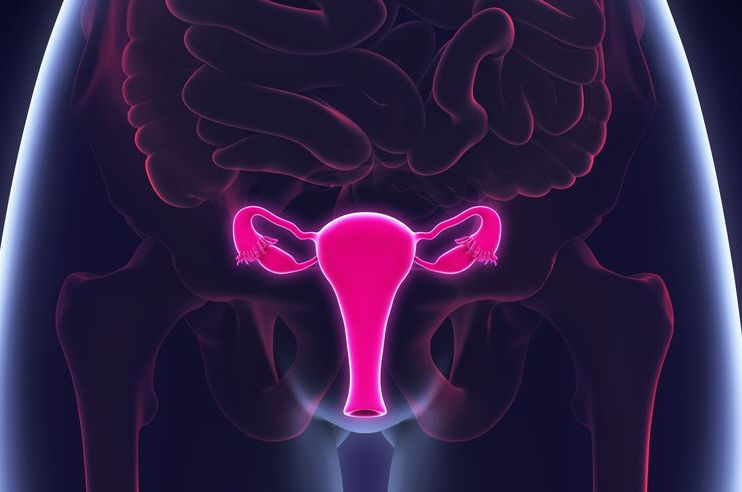Diagnostic Laparoscopy
Laparoscopy is an operation performed in the abdomen or pelvis using small incisions with the aid of a camera. The laparoscope aids diagnosis or therapeutic interventions with a few small cuts in the abdomen.
Laparoscopy, also known as diagnostic laparoscopy, is a surgical diagnostic procedure used to examine the organs inside the abdomen. It’s a low-risk, minimally invasive procedure that requires only small incisions.
Laparoscopy uses an instrument called a laparoscope to look at the abdominal organs. A laparoscope is a long, thin tube with a high-intensity light and a high-resolution camera at the front. The instrument is inserted through an incision in the abdominal wall. As it moves along, the camera sends images to a video monitor.Laparoscopy allows your doctor to see inside your body in real time, without open surgery. Your doctor also can obtain biopsy samples during this procedure.
Why is laparoscopy performed?
Laparoscopy is often used to identify and diagnose the source of pelvic or abdominal pain. It’s usually performed when noninvasive methods are unable to help with diagnosis.
In many cases, abdominal problems can also be diagnosed with imaging techniques such as:
ultrasound, which uses high-frequency sound waves to create images of the body
CT scan, which is a series of special X-rays that take cross-sectional images of the body
MRI scan, which uses magnets and radio waves to produce images of the body
Laparoscopy is performed when these tests don’t provide enough information or insight for a diagnosis. The procedure may also be used to take a biopsy, or sample of tissue, from a particular organ in the abdomen.
Your doctor may recommend laparoscopy to examine the following organs:
appendix
gallbladder
liver
pancreas
small intestine and large intestine (colon)
spleen
stomach
pelvic or reproductive organs
By observing these areas with a laparoscope, your doctor can detect:
an abdominal mass or tumor
fluid in the abdominal cavity
liver disease
the effectiveness of certain treatments
the degree to which a particular cancer has progressed
As well, your doctor may be able to perform an intervention to treat your condition immediately after diagnosis.
What are the risks of laparoscopy?
The most common risks associated with laparoscopy are bleeding, infection, and damage to organs in your abdomen. However, these are rare occurrences.
After your procedure, it’s important to watch for any signs of infection. Contact your doctor if you experience:
fevers or chills
abdominal pain that becomes more intense over time
redness, swelling, bleeding, or drainage at the incision sites
continuous nausea or vomiting
persistent cough
shortness of breath
inability to urinate
lightheadedness
There is a small risk of damage to the organs being examined during laparoscopy. Blood and other fluids may leak out into your body if an organ is punctured. In this case, you’ll need other surgery to repair the damage.
Less common risks include:
complications from general anesthesia
inflammation of the abdominal wall
a blood clot, which could travel to your pelvis, legs, or lungs
In some circumstances, your surgeon may believe the risk of diagnostic laparoscopy is too high to warrant the benefits of using a minimally invasive technique. This situation often occurs for those who’ve had prior abdominal surgeries, which increases the risk of forming adhesions between structures in the abdomen. Performing laparoscopy in the presence of adhesions will take much longer and increases the risk of injuring organs.
How do I prepare for laparoscopy?
You should tell your doctor about any prescription or over-the-counter medications you’re taking. Your doctor will tell you how they should be used before and after the procedure.
Your doctor may change the dose of any medications that could affect the outcome of laparoscopy. These drugs include:
anticoagulants, such as blood thinners
nonsteroidal anti-inflammatory drugs (NSAIDs), including aspirin (Bufferin) or ibuprofen (Advil, Motrin IB)
other medications that affect blood clotting
herbal or dietary supplements
vitamin K
You should also tell your doctor if you’re pregnant or think you might be pregnant. This will reduce the risk of harm to your developing baby.
Before laparoscopy, your doctor may order blood tests, urinalysis, electrocardiogram (EKG or ECG), and chest X-ray. Your doctor might also perform certain imaging tests, including an ultrasound, CT scan, or MRI scan.
These tests can help your doctor better understand the abnormality being examined during laparoscopy. The results also give your doctor a visual guide to the inside of your abdomen. This can improve the effectiveness of laparoscopy.
You’ll probably need to avoid eating and drinking for at least eight hours before laparoscopy. You should also arrange for a family member or friend to drive you home after the procedure. Laparoscopy is often performed using general anesthesia, which can make you drowsy and unable to drive for several hours after surgery.
How is laparoscopy performed?
Laparoscopy is usually done as an outpatient procedure. This means that you’ll be able to go home the same day as your surgery. It may be performed in a hospital or an outpatient surgical center.
You’ll likely be given general anesthesia for this type of surgery. This means that you’ll sleep through the procedure and won’t feel any pain. To achieve general anesthesia, an intravenous (IV) line is inserted in one of your veins. Through the IV, your anesthesiologist can give you special medications and well as provide hydration with fluids
In some cases, local anesthesia is used instead. A local anesthetic numbs the area, so even though you’ll be awake during the surgery, you won’t feel any pain.During laparoscopy, the surgeon makes an incision below your belly button, and then inserts a small tube called a cannula. The cannula is used to inflate your abdomen with carbon dioxide gas. This gas allows your doctor to see your abdominal organs more clearly.
Once your abdomen is inflated, the surgeon inserts the laparoscope through the incision. The camera attached to the laparoscope displays the images on a screen, allowing your organs to be viewed in real time.
The number and size of incisions depends upon what specific diseases your surgeon is attempting to confirm or rule out. Generally, you get from one to four incisions that are each between 1 and 2 centimeters in length. These incisions allow other instruments to be inserted. For example, your surgeon may need to use another surgical tool to perform a biopsy. During a biopsy, they take a small sample of tissue from an organ to be evaluated.
After the procedure is done, the instruments are removed. Your incisions are then closed with stitches or surgical tape. Bandages may be placed over the incisions.
How long does it take to recover from laparoscopy?
When the surgery is over, you’ll be observed for several hours before you’re released from the hospital. Your vital signs, such your breathing and heart rate, will be monitored closely. Hospital staff will also check for any adverse reactions to the anesthesia or the procedure, as well as monitor for prolonged bleeding.
The timing of your release will vary. It depends on
your overall physical condition
the type of anesthesia used
your body’s reaction to the surgery
In some cases, you may have to remain in the hospital overnight.
A family member or friend will need to drive you home if you received general anesthesia. The effects of general anesthesia usually take several hours to wear off, so it can be unsafe to drive after the procedure.
In the days following laparoscopy, you may feel moderate pain and throbbing in the areas where incisions were made. Any pain or discomfort should improve within a few days. Your doctor may prescribe medication to relieve the pain.
It’s also common to have shoulder pain after your procedure. The pain is usually a result of the carbon dioxide gas used to inflate your abdomen to create a working space for the surgical instruments. The gas can irritate your diaphragm, which shares nerves with your shoulder. It may also cause some bloating. The discomfort should go away within a couple of days.
You can usually resume all normal activities within a week. You’ll need to attend a follow-up appointment with your doctor about two weeks after laparoscopy.
Here are some things you can do to ensure a smoother recovery:
Begin light activity as soon as you’re able, in order to reduce your risk of blood clots.
Get more sleep than you normally do.
Use throat lozenges to ease the pain of a sore throat.
Wear loose-fitting clothes.
Results of laparoscopy
If a biopsy was taken, a pathologist will examine it. A pathologist is a doctor who specializes in tissue analysis. A report detailing the results will be sent to your doctor.Normal results from laparoscopy indicate the absence of abdominal bleeding, hernias, and intestinal blockages. They also mean that all your organs are healthy.
Abnormal results from laparoscopy indicate certain conditions, including:
adhesions or surgical scars
hernias
appendicitis, an inflammation of the intestines
fibroids, or abnormal growths in the uterus
cysts or tumors
cancer
cholecystitis, an inflammation of the gall bladder
endometriosis, a disorder in which the tissue that forms the lining of the uterus grows outside the uterus
injury or trauma to a particular organ
pelvic inflammatory disease, an infection of the reproductive organs
Your doctor will schedule an appointment with you to go over the results. If a serious medical condition was found, your doctor will discuss appropriate treatment options with you and work with you to come up with a plan for addressing that condition.

Lorem ipsum dolor sit amet, consectetur adipiscing elit. Phasellus ac aliquam velit. Phasellus dapibus cursus erat, quis consequat urna efficitur non. Phasellus cursus, erat quis mollis lobortis, urna risus hendrerit metus, id dictum metus purus vel magna. Nulla non purus sit amet arcu convallis egestas
Lorem ipsum dolor sit amet, consectetur adipiscing elit. Phasellus ac aliquam velit. Phasellus dapibus cursus erat, quis consequat urna efficitur non. Phasellus cursus, erat quis mollis lobortis, urna risus hendrerit metus, id dictum metus purus vel magna. Nulla non purus sit amet arcu convallis egestas
Lorem ipsum dolor sit amet, consectetur adipiscing elit. Phasellus ac aliquam velit. Phasellus dapibus cursus erat, quis consequat urna efficitur non. Phasellus cursus, erat quis mollis lobortis, urna risus hendrerit metus, id dictum metus purus vel magna. Nulla non purus sit amet arcu convallis egestas

COSMETIC SURGERY
Lorem ipsum dolor sit amet, consectetur adipiscing elit. Ut elit tellus, luctus nec ullamcorper mattis, pulvinar dapibus leo.

COSMETIC SURGERY
Lorem ipsum dolor sit amet, consectetur adipiscing elit. Ut elit tellus, luctus nec ullamcorper mattis, pulvinar dapibus leo.

COSMETIC SURGERY
Lorem ipsum dolor sit amet, consectetur adipiscing elit. Ut elit tellus, luctus nec ullamcorper mattis, pulvinar dapibus leo.
